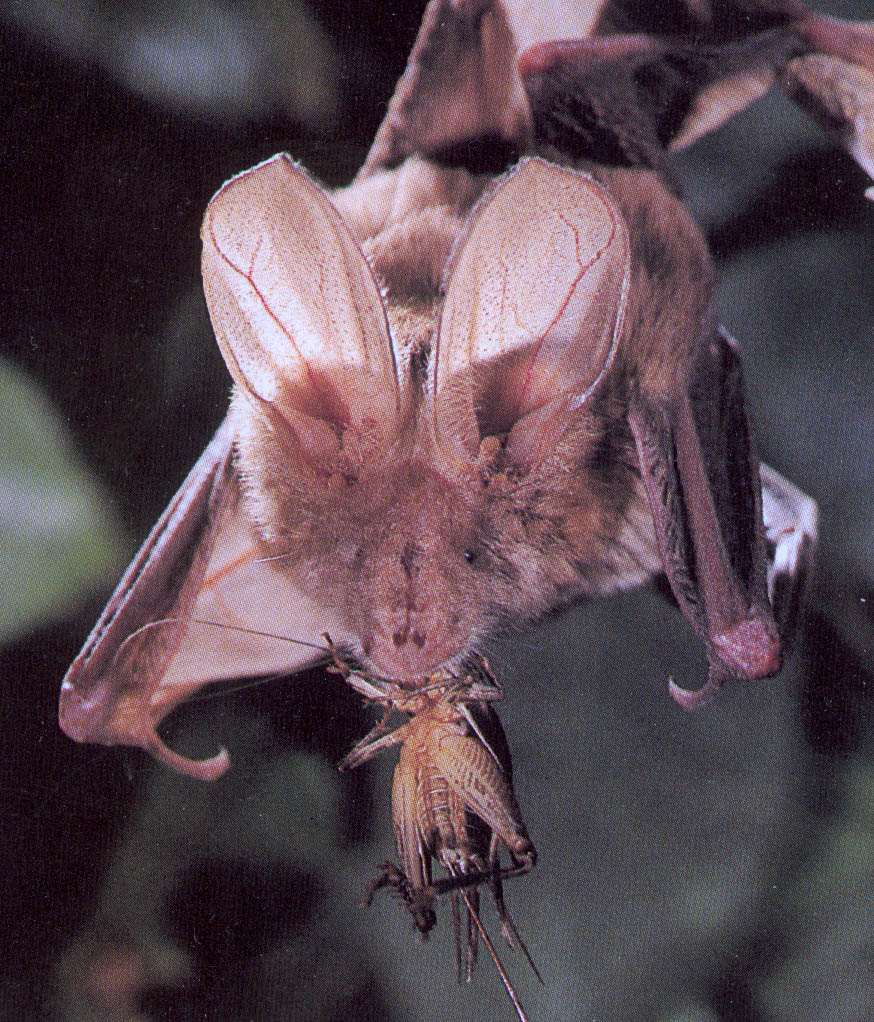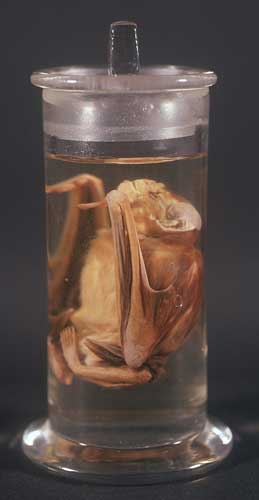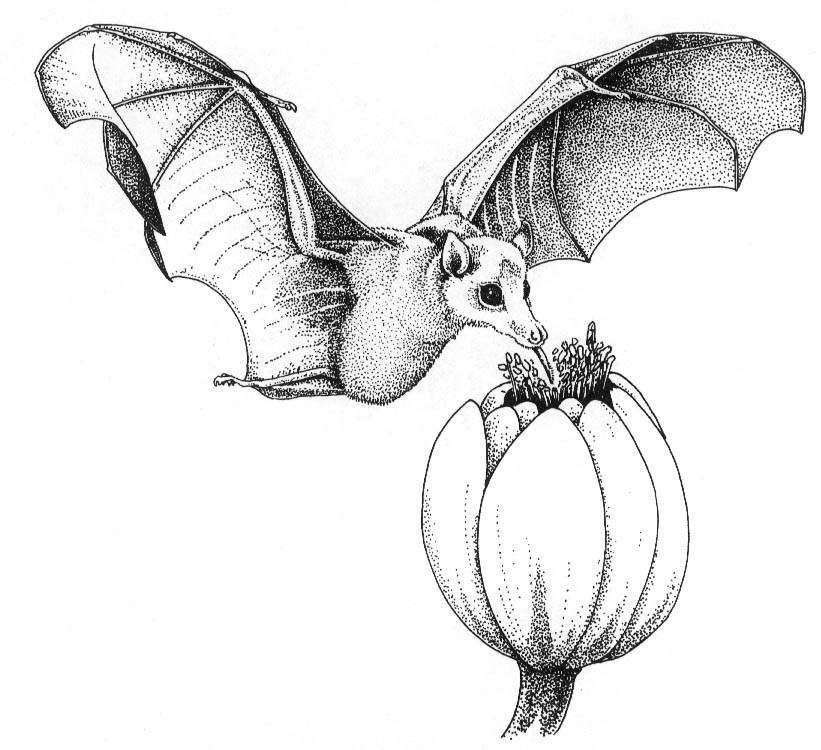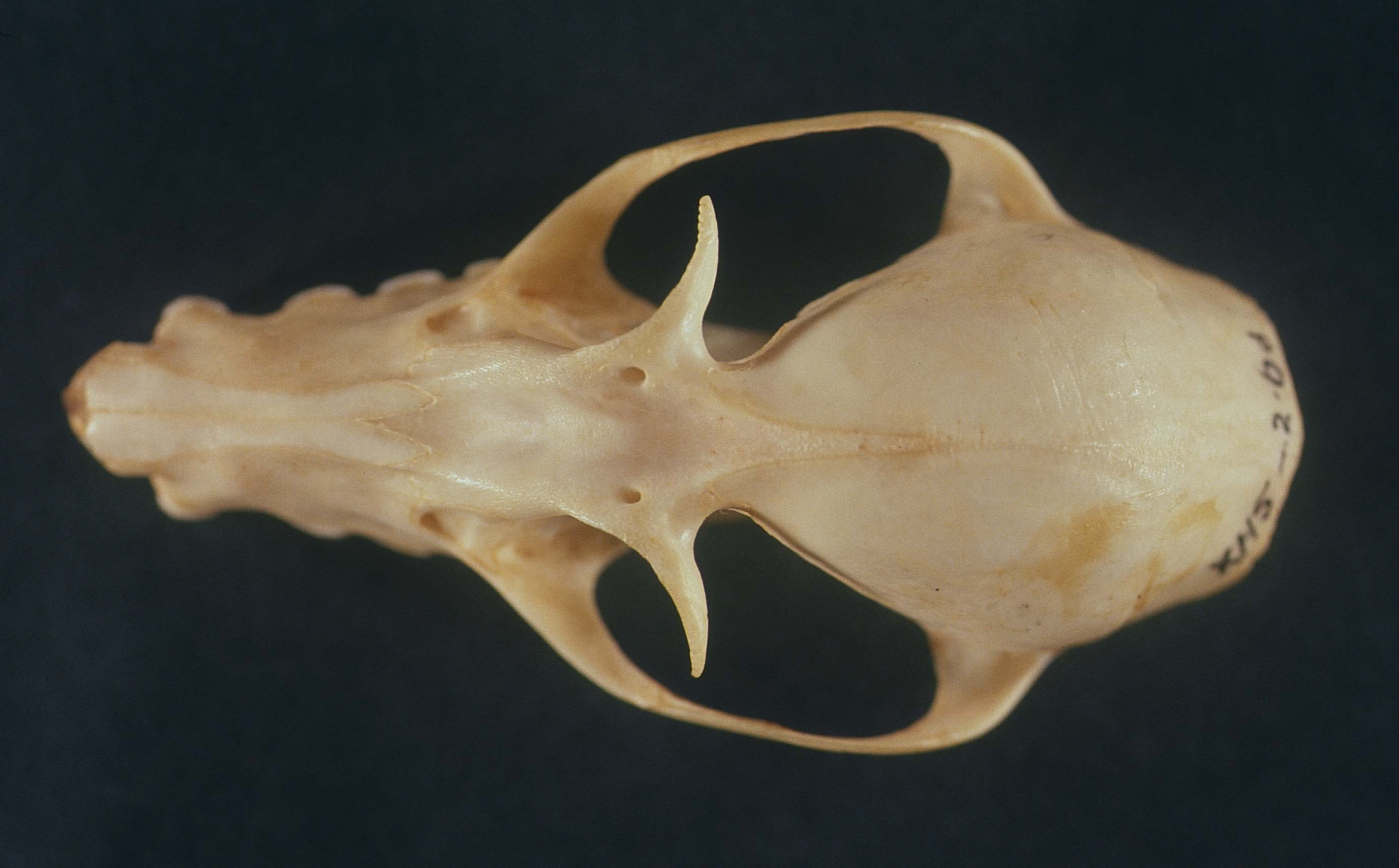

|
 |
Despite sharing a very similar basic appearance, bats have adopted an amazing variety of
different feeding habits.
Microbats feed mainly on insects, using their echolocation ability to find flying or
crawling insects and their superb flying skills to catch them. This involves gathering
prey in their wing or tail membranes, and transferring it to their mouths mid-flight!
Insect-eating bats are
supremely good at what they do - a single little brown bat can catch and eat 600 mosquitoes
in an hour1. |

An insectivorous Egyptian slit-faced bat |

A pickled vampire bat!
|
Other microbats feed on fish, frogs, lizards, small rodents, small birds, and even other
bats and while bats have a reputation for sucking blood, only three out of the thousand
or so species of bat actually feed on blood12. This picture shows a specimen from the
museum, click on the image to see his face.
Vampire bats usually
feed on livestock, although humans may occasionally
be unwitting blood donors. They make a small, painless incision in the skin and lap up the
blood with their tongues while anti-coagulant chemicals in their
saliva ensure that the blood meal continues flowing.
|
Still other microbats have adopted a diet of fruit, flowers, pollen, or nectar - a lifestyle
that they share with the larger megabats, or fruitbats. Fruit eaters grab food with
their mouths and carry it to a suitable perch12. Epaulette
fruitbats living in tropical regions regularly handle up to 3 times their body weight in
figs every night2.
|

An African long-
tongued fruit bat |

A nectarivorous fruitbat skull |
|
There is also a correlation between the shape of the head and the type of food eaten. For
example, most fruit-eaters have short, broad faces good for biting rounded fruits12, while
nectar feeders have long, narrow muzzles that are good for reaching into
flowers. This picture shows the skull of a nectarivorous fruitbat, notice the forward-facing orbits that
provide powerful binocular vision.
|
The Evolution of Diet
The first megachiropterans were probably already
specialised for a diet of fruits. By the late miocene, the
microchiropteran frugivores (family Phyllostomidae) had evolved in the New World, probably
deriving from insect-eating microbats that had moved through temperate Europe and America
before entering the New World tropics17. The later adoption of frugivory and nectarivory in
these bats meant that they were exposed to plants already pre-adapted for visitation by
insects. The transition from insectivory to eating nectar or fruit probably occurred through
bats catching insects near or on plants. For example, an extant African insectivore
(Hipposideros commersoni) has been seen attacking figs to extract
weevil larvae, thereby incorporating plant parts into the diet3. Wounds also attract insects,
so a diet of blood would similarly have been open to gleaning microbats - an opportunity
welcomed by the vampire bats. Thus, slightly different starting points may explain
major differences been the feeding habits of megabats and fruit-eating microbats. |
It should be clear by now that the reputation that bats have as evil, bloodthirsty, winged-
demons of the night is somewhat unjustified. Bats are not only elegant and fascinating
creatures but they are also an integral part of the ecosystem. Unfortunately, because of
human misunderstanding, as well as practices such as habitat destruction, many bat species
are now on the brink of extinction.
|












